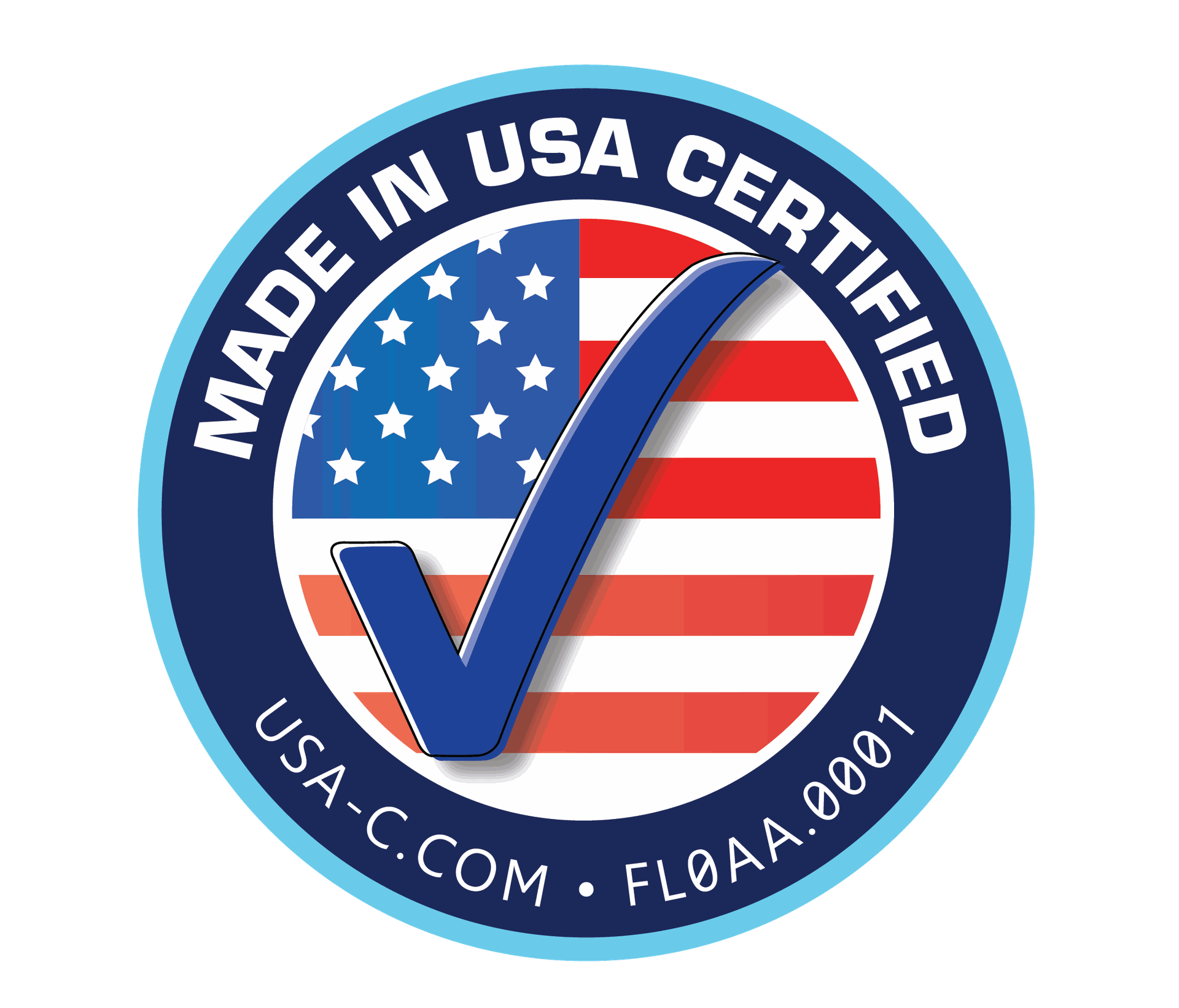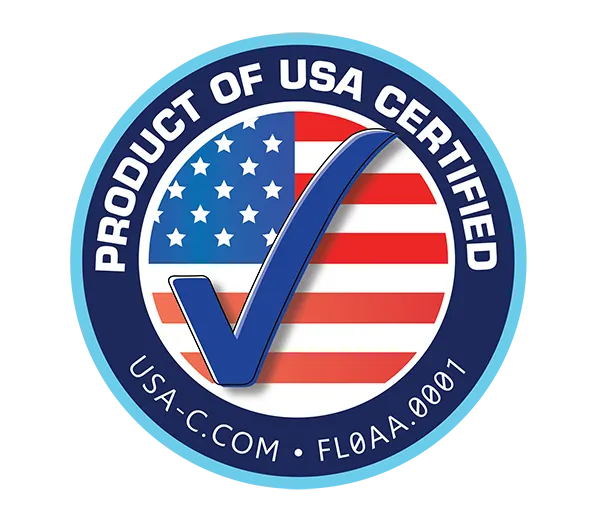MADE IN USA vs MADE in AMERICA
Clarifying Certification:

Clarifying Certification: MADE IN USA ONE Upholds Standards for U.S. Products
In an era where the origin of
products is more important to consumers than ever, MADE IN USA ONE is committed
to clarifying and distinguishing the criteria underpinning two crucial
designations: MADE IN USA CERTIFIED and PRODUCT OF USA CERTIFIED. By
understanding these certifications, we believe consumers can make informed
choices and play a significant role in supporting domestic manufacturing.

MADE IN USA CERTIFIED: Ensuring Transparency in
Manufacturing The
MADE IN USA CERTIFIED seal represents more than just a label. It guarantees
that a product has been manufactured within the United States with a
quantifiable percentage of its components sourced domestically. This
certification is crucial in distinguishing manufactured goods, ensuring that
the "Made in the USA" claim is accurate, transparent, and reliable.
Each product bearing this seal meets stringent requirements, thereby
reinforcing the integrity of U.S. manufacturing and building trust among
consumers, making them feel secure and reassured about their purchases.

PRODUCT OF USA CERTIFIED: Guarantee for Agriculture and Livestock Products
Unlike its
counterpart, the PRODUCT OF USA CERTIFIED seal is reserved exclusively for
edible products such as beef, chicken, and vegetables. This certification
requires 100% of the product to be sourced and produced within the United
States. It is a testament to the quality and origin of our nation’s
agricultural outputs, and importantly, it reassures consumers about the safety
and authenticity of the food they consume.
Clarifying U.S. COOL Labeling in the Context of Global Trade Agreements
The distinctions between "MADE IN USA" and "PRODUCT OF USA" are not just crucial for consumers and manufacturers but also in a global trade context influenced by agreements such as NAFTA (North American Free Trade Agreement), USMCA (United States-Mexico-Canada Agreement), CAFTA-DR (Central American Free Trade Agreement-Dominican Republic), and Mercosur (Southern Common Market). These agreements facilitate trade and define economic relationships between the U.S. and other countries in the Americas, often creating complexities in product origin that can confuse consumers. Understanding these certifications is crucial for manufacturers, equipping them with the knowledge to navigate the complexities of global trade.
Our call to use "MADE IN USA" and "PRODUCT OF USA" labels addresses these complexities. We aim to preserve the integrity of U.S. Country of Origin Labeling (COOL) and ensure that U.S. products are correctly branded and recognized in both domestic and international markets. This clarification assists in maintaining straightforward communication about product origins, enabling consumers to make informed choices, and supporting U.S. businesses under these significant trade agreements.
Advocating for U.S. Businesses
In our ongoing efforts to promote and protect U.S. businesses, it is crucial to refer to them as "U.S. Businesses" rather than "American Businesses." This terminology enhances the specificity and aligns with legal frameworks like the Buy American Act, which are pivotal in supporting domestic enterprises.
As we navigate the complexities of global trade and domestic manufacturing, MADE IN USA ONE remains at the forefront of advocating for clear, unambiguous labeling. By doing so, we champion the cause of U.S. manufacturers and producers, bolstering national pride in our industrial and agricultural capabilities. Let us collectively embrace and advocate for labels that accurately represent the origins and quality of products produced within our borders.
About MADE IN USA ONE
MADE IN USA ONE supports and promotes U.S. manufacturing and production through rigorous certification processes and public education. We are committed to upholding American-made products' highest transparency and quality standards.
The distinctions between "MADE IN USA" and "PRODUCT OF USA" are pivotal in a global trade context influenced by agreements such as NAFTA (North American Free Trade Agreement), USMCA (United States-Mexico-Canada Agreement), and CAFTA-DR (Central American Free Trade Agreement-Dominican Republic). These agreements facilitate trade and define economic relationships between the U.S. and other countries in North and Central America, often creating complexities in product origin that can confuse consumers.
- NAFTA and USMCA: These agreements involve North America, specifically the countries of Mexico, Canada, and the United States. They aim to reduce trading costs, increase business investment, and help North America be more competitive in the global marketplace.
- CAFTA-DR: This agreement includes the United States and six Central American countries: Costa Rica, Dominican Republic, El Salvador, Guatemala, Honduras, and Nicaragua. It promotes stronger trade and economic ties through reduced tariffs and improved market access.
The equivalent trade bloc in South America is Mercosur (Southern Common Market), which includes Argentina, Brazil, Paraguay, and Uruguay. This bloc fosters economic cooperation by facilitating free trade and the movement of goods, people, and currency among its member countries.
Footnote: It is important to note that while CAFTA-DR includes Central American nations, Mercosur serves as the Southern Common Market, primarily involving South American countries. These distinct trade agreements reflect the economic integration efforts within different regions of the Americas.